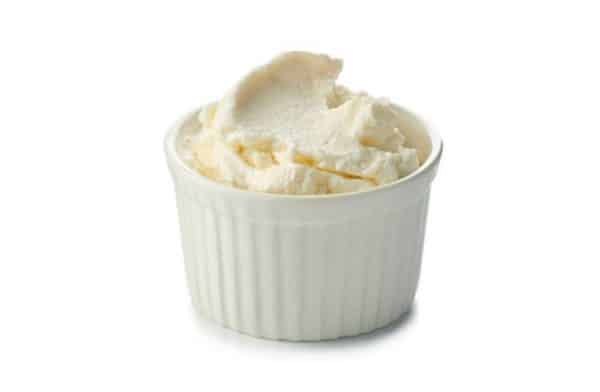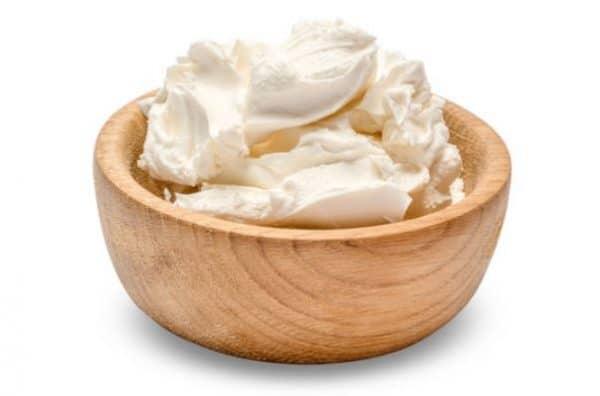How Long Can Cream Cheese Be Kept Out

Simply Healthy Family may collect a share of sales or other compensation from the links on this page.
Is it safe to leave cream cheese out overnight?
We consulted www.foodsafety.gov , an official site of the US government, to find an answer to that question. And the answer is, no. The longest cream cheese can sit out is 2 hours.
Cream cheese is a delicate, perishable food based on milk and cream. It should not be allowed to sit out at temperatures above 40 F for longer than 2 hours. Nasty bacteria like Salmonella and Listeria grow quickly in cream cheese left at room temperature.
Note that Salmonella doesn't change the appearance of the food it contaminates. You can't smell or taste a difference, either.
If a package of cream cheese or even a bagel smeared with cream cheese has been left out of the refrigerator for longer than two hours, there's no choice but to assume it's contaminated and to throw it away.
Refrigerating the cream cheese or bagel after it's been out for longer than two hours won't save it. Harmful bacteria have already established themselves in it, and chilling the product will only slow down their growth, not make the food safe.
If the room temperature is 90F or hotter, spoilage can happen even at one hour.
Tips when buying cream cheese

Always check the expiry date on the package, and buy the product with the longest date.
Check the package while you're in the store. If the box has a slimy or soft feel, reject it. Fresh cream cheese feels firm and the carton should have no signs of leaking.
Cream cheese is like milk or any other soft dairy product: get it home and in the refrigerator as soon as possible after buying it.
Don't leave it in the car for much time. Save buying cream cheese for last on the shopping trip or errand run.
If you have some way to keep it cold while returning home from shopping, as an insulated bag, stash the cream cheese in it.
If planning to buy cream cheese and freezing it for later, buy cream cheese bricks. Cream cheese bricks in foil and paper packaging freeze better than cream cheese in plastic cans.
Low-fat cream cheese is safe to freeze, but its taste and texture aren't good after thawing out.
Safe storage of cream cheese
According to the Philadelphia Cream Cheese company, an unopened package of cream cheese is good 1 month past the "Best When Purchased By" date on the carton – if kept refrigerated at 40°F at all times.
Once it is opened, the cream cheese should be used within 10 days.
To keep track of cream cheese you've set on your kitchen counter, set a timer.
If your electricity goes out, wait no longer than 4 hours to throw out the refrigerated cream cheese.
Any cream cheese left in an opened package should be put back in the refrigerator immediately.
Store an opened package in an airtight container.
Lacking a container, wrap the opened container tightly in foil and plan to use it up soon.
Don't let cream cheese touch meat or meat products.
If you are pregnant, elderly, or otherwise at a higher risk for food-borne illness, always be more careful about how long you leave dairy-based foods at room temperature.
Freezing cream cheese

If you stock up on cream cheese to freeze it, put it in the freezer right away. Don't keep it in the refrigerator first.
Freeze extra, unopened packages of cream cheese in their original packaging. Thaw frozen cream cheese in the refrigerator.
You may also thaw out frozen cream cheese in the kitchen, but note that it will likely become quite grainy. While you may not want graininess in a spread or dip, it won't make a difference in baked goods.
Freezing an opened package of cream cheese
Wrap the opened package in cling wrap. Place in a sealable plastic bag or container.
Label the cheese with the date.
Cream cheese will stay good when frozen for 6 months.
You can also freeze flavored cream cheese.
Have you made too much cream cheese dip to serve right away? It's ok to freeze extra but do so as soon as possible. Be aware that it won't have the same creamy smoothness when it thaws out.
How to soften cream cheese quickly and safely
Let's say you're about to start a recipe featuring cream cheese, but you forgot to take it out of the refrigerator. Here are some easy ways to soften it quickly.
Take the block of cream cheese out of the cardboard package, but leave it in its foil wrapper. Don't open the foil. Place the block in a bowl of warm water. The foil won't leak.
Cut the cream cheese into cubes. Leave some space between the pieces. Cover with a clean kitchen towel and test for softness after 20 minutes.
Cooking with refrigerated and thawed-out cream cheese
Rule of thumb: If making a dish where the smoothness of the cream cheese matters, as in dips or spreads, use fresh, refrigerated cream cheese.
If the recipe will be baked or cooked, the grainy texture of pre-frozen cream cheese won't make a difference. Use up the reserved frozen cream cheese in that case.
Cream cheese gets grainy after freezing because of its relatively high water content. Ice crystals form in it during freezing. When the cheese thaws out, the water separates from the fatty curds and the cheese, which was smooth before freezing, becomes grainy, similar to cottage cheese or ricotta.
How to improve thawed-out cream cheese
On the stovetop:
Use a double boiler, or improvise one by filling a medium-sized saucepan with water, then fitting a bowl over it. Be certain that the bottom of the bowl does not touch the water. Boil the water in the saucepan.
Put the thawed cream cheese in the bowl (or top of a double boiler).
Gently whisk the cream cheese until smooth. You may add a teaspoon or two of cream to encourage creaminess.
In the microwave:
Put the cheese, completely unwrapped, into a microwave-safe bowl. Microwave the cheese on low for 10 seconds. Turn it over, then microwave another 10 seconds. Do this once or twice more.
Then there's the old-fashioned "elbow grease" method. Put the thawed cheese in a bowl and work it with a spoon, pushing it vigorously against the sides of the bowl until it regains creaminess. Add a tiny amount of milk, sour cream, or sweet cream to help it out.
How to know if the cream cheese is spoiled

If cream cheese looks yellow, greenish, or pink , it has spoiled and gone moldy.
If there's a slimy layer on the surface, or parts have dried out, discard it.
Spoiled cream cheese has a strong, sour smell.
If any of these signs appear on the cream cheese you bought, examine the package for its expiry date. If the cheese is still under that date, return it to the store.
Storing cheesecake and other foods rich in cream cheese
Cheesecake, cakes with cream cheese frosting, and pastries like cheese Danishes should be refrigerated.
High moisture and fat content in cream cheese invite bacteria when left out at room temperature, even if the food has been baked. So stash your cream-cheese-rich pastries in the fridge.
But you don't have to serve cold, hard pastry. (Some cheesecake recipes are served cold, of course, especially those whose fillings come out soft).
Remove your cake or pastry from the refrigerator an hour before serving to let it come to room temperature if desired.
Baked foods with only a small amount of cream cheese are safe to keep out, covered. The Oregon State University extension advises that such items (like brownies and cookies) are considered low-risk for spoilage. The flour and sugar in the baked goods absorb moisture, reducing the chances that bacteria will find its way in and grow.
So how is it that commercial cream cheese baked goods stay out on supermarket shelves for so long? The answer is preservatives. If you bake your own cream-cheese goodies, you're better off, health-wise.
And here's a little bonus: home-made, preservative-free cream cheese. So easy!
Please follow all the rules of food safety as described above. Enjoy!
Homemade Cream Cheese
Prep Time: 5 minutes
Cook Time: 5 minutes
Yield: 1 cup
Ingredients
8 cups full-fat milk
5 tablespoons fresh lemon juice
Salt to taste
Instructions
Boil the milk in the saucepan.
As soon as it boils, add the lemon juice.
Remove from heat. The milk will curdle in a layer on top, leaving liquid, yellow whey underneath.
Pour the curdled milk through a double layer of cheesecloth set in a sieve.
Rinse the curds under cold running water. Squeeze the curdled milk as much as you can to remove any traces of whey.
Process the curds in a food processor or blender. Add salt. You'll have light, smooth cream cheese in 1-2 minutes.
Use your cream cheese right away, or store it in an air-tight container, in the refrigerator . Keep it up to 7 days.
You May Also Like: Looking For Gorgonzola Cheese Substitutes? Here Are 5 Good Choices
How Long Can Cream Cheese Be Kept Out
Source: https://www.simplyhealthyfamily.org/can-cream-cheese-sit-out-overnight/